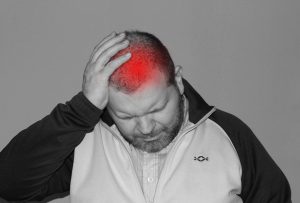What Are Cluster Headaches?
Cluster headaches are one of the least common but some of the most debilitating types of headache you can get, affecting fewer people than tension headaches or a migraine. While their prevalence remains low, the severity and unique features of these conditions pose an important medical challenge for patients who suffer from them. Commonly called “suicide headaches” for the extreme pain they inflict, cluster headaches are characterized by their cyclical behavior—happening in bouts or “clusters” over weeks or months, then alternating with times of no symptoms.
To properly understand cluster headaches, however, we need to look at what they are, the symptoms, how they form and get treated, as well as the impact they have on sufferers.
Defining Cluster Headaches
Summary Cluster headaches are a primary headache disorder that happens on their own and is not the result of an underlying medical condition. They are defined as severe and acute episodes of pain, most commonly present on one side or around an eye. The pain is often sharp, stabbing, or burning and is much more intense than regular headaches such as migraines.
What is unique about cluster headaches is their characteristic periodicity. They appear in clusters over weeks or months, where an individual has between one and a number of headaches per day. Episodes often wake someone from sleep, and each headache lasts 15 minutes to three hours; attacks occur one or more at the same time of day for weeks.
Typically, cluster headaches will onset between the ages of 20 and 50 and are more common in men than women. They can, however, happen at any age and tend to last for years, frequently lessening with aging.
Symptoms of Cluster Headaches
Cluster headache symptoms are dramatic and unique compared to other headache types. The hallmark symptom is unrelenting pain, frequently cited as the worst sustained pain a person can endure. Pain is nearly always one-sided and localized to or behind the eye.
The pain is often accompanied by other symptoms, such as the following:
- Reddish appearance or tearing of the eye involved.
- Nasal congestion or a runny nose affecting the side of the head in which your headache is present.
- You might have a droopy eyelid (called ptosis) or swelling around the eye.
- Feeling anxious or agitated during the attack.
Looks that way when light and sound sensitivity, albeit less common than in migraines.
These are so intense that they can’t sit still during an attack and may need to walk around or roughly rock backward and forward in an effort to manage with the misery themselves.
Cluster Headaches Are Cyclic
Cluster headaches are another form of headache that have an unusual episodic nature. In between remission phases, headaches can be relatively frequent in a cluster period — in some cases, as many as three times a day. Cluster cycles can be measured in weeks to months, and remission can be months or years long.
In episodic cluster headaches, attacks are clustered within periods with intervals of three months or more between episodes. But for some, the headaches turn chronic—less than a month without an attack in between, or clusters lasting more than a year without disappearing. Chronic cluster headaches are especially difficult to treat because they are so continuous.
Cluster Headache Causes and Triggers
While the cause of cluster headaches remains unknown, some study suggest a particular hyperlink to the hypothalamus, an area of the mind that governs organic rhythms. Even so, the characteristic timing of events may be the result of abnormal activity in the hypothalamus, as attacks tend to peak at certain seasons or times of day.
There seems to be a genetic component too. Cluster headaches do run in families but are not inherited; the risk of developing cluster headaches is increased somewhat if someone else in the family has it. Besides, a number of triggers may lead to attacks in the cluster period. Cluster headaches
- Alcohol is a very frequent and strong trigger.
- Perfume or paint fumes and other potent smells
- Alterations in sleep schedules or cycle disturbances
- Places with increased altitudes, like traveling in plane.
A cluster headache has no relation with dietary triggers, stress, or hormones, as observed in a few cases of migraines.
Diagnosing Cluster Headaches
Because they can overlap with other types of headaches — such as migraines or sinus headaches — diagnosing cluster headaches can be difficult. A comprehensive medical history and detailed symptom history are key to diagnosing accurately. They routinely ask about how long, how intense and when headaches occur, as well as whether tearing or nasal stuffiness occurs with the headache, Dr. Rosen says.
Your doctor might order imaging tests — an MRI or CT scan — to confirm that your cluster headaches are not caused by some condition, such as a brain tumor or aneurysm. Although there are no tests for cluster headaches, the pattern and associated symptoms of these type of headaches typically make them easy to identify.
Cluster Headache Treatment
There is no cure for cluster headaches, but treatments can help control the condition and decrease how often they happen, as well as relieve pain when an attack occurs. The management options are classified into three types: acute treatments, preventive therapies, and lifestyle modifications.
Acute treatments are used to relieve pain during an attack as quickly and effectively as possible. Oxygen therapy, where pure oxygen is inhaled through a mask, works quickly for many people and can halt an attack in just minutes. Another common treatment involves triptan medications like sumatriptan, which is used via injection or nasal spray for fast absorption.
Preventive treatments aim to limit the number and intensity of attacks that happen within a cluster episode. This can include medications like calcium channel blockers (for example, verapamil), corticosteroids (for example, prednisone) or anti-seizure medications (like topiramate). Preventive treatments are typically initiated with the beginning of a cycle and then gradually reduced when the cycle ends.
Chronic cluster headaches or frequent episodes may warrant attempts at neuromodulation techniques like nerve stimulation. Although rare, surgery is an option for people who do not respond to other treatments.
How Cluster Headaches Affect Your Daily Life
Cluster headaches severely affect all aspects of the lives of their sufferers. Work, social, & personal life can be disrupted by the severity and unpredictability of attacks. Most sufferers report that they feel dread during the remission periods, anticipating when the next cluster period is going to begin.
Cluster headaches can also take a serious emotional toll, with some folks developing anxiety, depression, or feelings of loneliness. This requires that family, friends, and healthcare providers be empathetic to this issue in order for an individual with diabetes to seamlessly live a normal life.
Living with Cluster Headaches
Self-care and lifestyle changes can be important in the management of cluster headaches, but each person is different, so not all will help you. Avoiding triggers, including alcohol or not having a set sleep schedule (32), is critical during a cluster period. Consistent sleep patterns, a nutritious diet, and stable stress levels can also prevent their occurrence.
They are true resources to live your life positively under cluster headache care. Encounters with other people who are aware of how difficult that condition can be are both reassuring and invigorating.







Leave a Reply